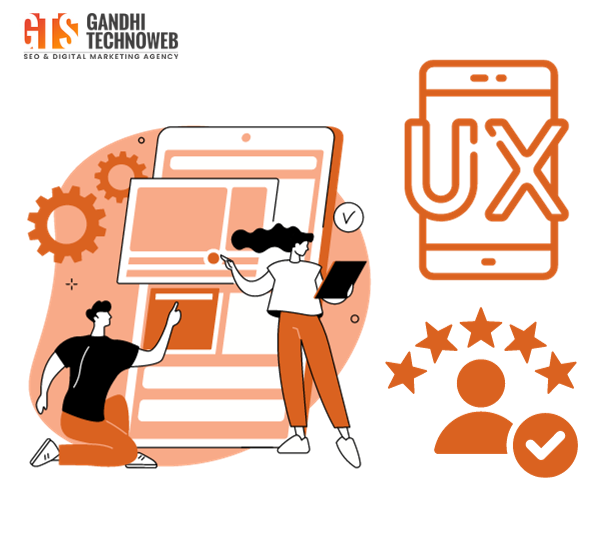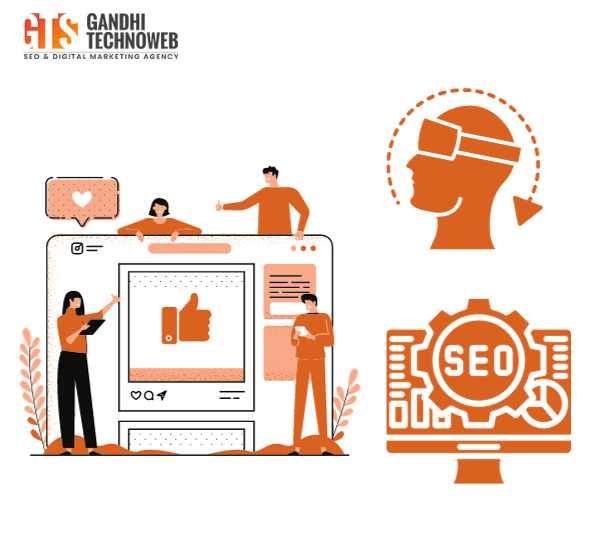Balancing Automation in AI-Driven Marketing Strategies
Introduction:
In the fast-paced world of digital marketing, where algorithms and automation dominate, the remains irreplaceable. Gandhi Technoweb Solutions recognizes the delicate balance needed between cutting-edge automation and personalized interactions to create effective AI-driven marketing strategies.
In recent years, Artificial Intelligence (AI) has revolutionized the way businesses connect with their audience. From predictive analytics to chatbots, AI tools have significantly improved efficiency and effectiveness in marketing campaigns. However, there’s a crucial aspect that must not be overlooked—the human touch.

Wasting Money on Ineffective Marketing? Is Our Agency the Key to Maximizing Your ROI?
Drive unparalleled success in your Performance Marketing endeavors with our Conversion Optimization strategies.
The Power of Personalization:
While automation streamlines processes, personalization fosters a deeper connection between brands and consumers. The quest for efficiency, marketers must not lose sight of the unique needs and preferences of each individual.
Personalization in AI-driven marketing involves tailoring content, recommendations, and interactions based on user behavior and preferences. This not only enhances customer experience but also increases the likelihood of conversion. When users feel understood and catered to on a personal level, they are more likely to engage and remain loyal to a brand.
Quotes:
“In the era of AI, never underestimate the power of human connection. Personalization is not just a strategy; it’s a commitment to understanding and meeting individual needs.”
John Doe, Marketing Expert Include thought-provoking quotes from industry experts to reinforce the significance of the human touch in AI-driven marketing.
Reference Image:
Comparisons:
|
Aspect |
AI-Driven Marketing (2024) |
Previous Approach (2023) |
Future Vision |
|
Efficiency |
High |
Moderate |
Continuously Improving |
|
Personalization |
Emphasized |
Limited |
Integral Component |
|
Customer Engagement |
Increased |
Varied |
Sustained Interaction |
Striking the Right Balance:
The importance of striking the right balance between automation and personalization. While AI can handle repetitive tasks, analyze vast amounts of data, and deliver targeted messages, it is the human touch that brings authenticity and emotion to the table.
Automated processes can efficiently handle routine interactions, freeing up time for marketers to focus on creative and strategic aspects. However, the true magic happens when AI is used as a tool to enhance human interactions, not replace them.
By combining the analytical power of AI with the emotional intelligence of humans, marketers can create campaigns that resonate on a personal level.
How Automation Makes Your Jobs Easy:
Automation streamlines tasks, enhancing efficiency and easing job responsibilities in several ways. Firstly, it reduces manual errors by replacing repetitive tasks with precision-driven algorithms, ensuring accuracy. Secondly, it accelerates workflow by handling routine processes swiftly, saving time for employees to focus on more complex and creative aspects of their roles. Thirdly, it enhances consistency by applying standardized procedures consistently, minimizing variations in output. Lastly, automation boosts productivity by handling mundane tasks, allowing human workers to engage in strategic decision-making and innovative endeavors, ultimately contributing to a more dynamic and rewarding work environment.
Understanding the Customer Journey:
A key aspect of effective AI-driven marketing is understanding the customer journey. Businesses leverage AI to analyze customer behavior at various touchpoints. This data can then be used to deliver personalized experiences that align with the customer’s journey, from awareness to purchase and beyond.
By utilizing AI to track and understand customer interactions, businesses can predict needs, address pain points, and offer timely and relevant solutions. This not only enhances customer satisfaction but also contributes to long-term brand loyalty.
Digital Marketing involves using various channels and strategies to drive measurable results for a business. AI tools can greatly enhance the effectiveness of performance marketing efforts. Here are some AI tools and technologies that can make performance marketing jobs easier:
Chatbots and Virtual Assistants:
1. Use Case: Improve customer engagement and provide instant support.
2. AI Tool Examples: Drift, Intercom, Chatfuel.
Predictive Analytics:
1. Use Case: Forecast trends and customer behavior for more informed decision-making.
2. AI Tool Examples: Google Analytics, IBM Watson Analytics, RapidMiner.
Marketing Automation:
1. Use Case: Streamline repetitive tasks, nurture leads, and personalize marketing campaigns.
2. AI Tool Examples: HubSpot, Marketo, Pardot.
Personalization Engines:
1. Use Case: Deliver personalized content and experiences to individual users.
2. AI Tool Examples: Optimizely, Evergage, Dynamic Yield.
Programmatic Advertising:
1. Use Case: Automate the buying of ads and optimize targeting in real-time.
2. AI Tool Examples: Google Ads, Adobe Advertising Cloud, SmartyAds.
AI-Powered Content Creation:
1. Use Case: Generate high-quality content and optimize for SEO.
2. AI Tool Examples: OpenAI’s GPT-3, Copy.ai, Writesonic.
A/B Testing and Optimization:
1. Use Case: Test different versions of content to optimize for conversions.
2. AI Tool Examples: Optimizely, Convert, Adobe Target.
Customer Segmentation:
1. Use Case: Identify and target specific customer segments for more personalized marketing.
2. AI Tool Examples: Segment, BlueConic, Salesforce Audience Studio.
Social Media Analytics:
1. Use Case: Monitor and analyze social media performance.
2. AI Tool Examples: Hootsuite, Socialbee, Brandwatch.
Sentiment Analysis:
1. Use Case: Analyze customer sentiment to gauge brand perception.
2. AI Tool Examples: Brandwatch, MonkeyLearn, Lexalytics.
Voice Search Optimization:
1. Use Case: Optimize content for voice search to capture a growing market.
2. AI Tool Examples: SEO tools like SEMrush, Moz, or tools that integrate with voice assistants.
Machine Learning for Ad Targeting:
1. Use Case: Improve ad targeting by learning from user behavior.
2. AI Tool Examples: Criteo, AdRoll, Kenshoo.
Dynamic Pricing Algorithms:
1. Use Case: Optimize pricing dynamically based on market conditions and customer behavior.
2. AI Tool Examples: RepricerExpress, Prisync, Dynamic Pricing.
Customer Journey Mapping:
1. Use Case: Understand and optimize the customer journey using AI-driven insights.
2. AI Tool Examples: Salesforce Customer 360, Adobe Journey Optimizer.
Remember, the effectiveness of these tools depends on your specific business goals and the nature of your performance marketing strategy. It’s essential to integrate these tools seamlessly into your workflow and continually analyze and adapt based on the results.

Not Sure How to Boost Your Online Visibility? Explore the Power of Performance Marketing with Our Agency!
Achieve peak performance in your marketing campaigns through the power of Conversion Optimization.
The Future of AI-Driven Marketing:
As technology continues to evolve, A future where AI becomes an even more integral part of marketing strategies. However, the human touch will remain paramount. The challenge lies in harnessing the power of AI to augment human capabilities rather than replace them.
Conclusion:
The synergy between automation and personalization is the key to success in AI-driven marketing. Future advocates for a thoughtful approach that combines the efficiency of AI with the empathy and creativity of human marketers. By finding the right balance, businesses can create impactful campaigns that resonate with their audience on a personal level, ensuring long-term success in the ever-evolving landscape of digital marketing.









